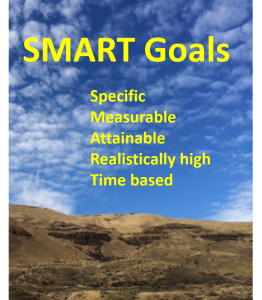When was the last time you, personally, tackled your manufacturing business plan?
Hiring a consultant to develop one for you does not count. The plan is his not yours. A manufacturing business plan really needs to be yours. No one else.
Having a good up-to-date business plan gives you confidence in your direction, a solid piece to hand over to the bank or surety company when you go for capital loans, short term loans, or bonds. It also sets you apart from your competition as a company with a plan. Who knows maybe that killer partner or sales guy that can take your company to another level asks for a manufacturing business plan.
A manufacturing business plan has to have the answers to key questions embedded in it, the answers that can only come from you. A good coach can help you stay on track to get it right.
Get a manufacturing business plan guide and template to get you started.
[chimpy_form forms=”5″]
There are a few key questions that will serve you well to think through and embed in your manufacturing business plan. Not only having a business plan but a manufacturing business plan that is aligned with you and what you want will set you apart.
Consider these 7 essentials as you build your business plan.
Why are you in business?
Let me take a stab at answering that question, “To make money!” Not an answer of someone who aspires to make a business grow, be profitable, sustain through succession.
The question is why are you in this business?
This question can be more difficult to answer than the first answer of “to make money.”
The answer to this question is your underlying motivation.
It is what you value and why you haven’t given this business up for something else. Owners that I’ve spoken with talk about the love of metal, the heartbeat of their company (the press brake), seeing their parts as part of a bigger product that has a positive effect on people who use them, and “I want to inspire confidence with our products in our customers.”
What do you want for your business?
What do you see your business like in 3 years, 5 years, 10 years?
Describe it as if you are bragging to your grand kids or some competitor over dinner. Be vivid and concise as you paint your picture of the future.
What business are you in?
Many consider this question dumb. In reality, it is extremely easy to answer incorrectly.
It is much harder to answer in a way that can impact the business strategically (Read strategically as setting you up to make a lot of revenue and profits).
Do you manufacture and sell parts?
OR
Do you deliver confidence in structural integrity
Do you deliver aesthetically pleasing panels, functional modular panels,
Do you deliver on-time, in spec every time.
Do you deliver confidence?
Who do you serve?
Here’s an answer I’ve heard more than once, “Anyone who will buy?” Ha ha ha. “That’s a dumb question!”
Yes, you do want people who buy. That does master the obvious.
This is business and that means there has to be a focus and determination to serve an market in the best way possible. That means you need to know and understand your market.
What are the characteristics of the market you serve? This is the typical question in all standard business plans. Good to answer it with all the subquestions.
The more interesting question has to do with the people in the market. The answers here can serve you in your sales, marketing, and a host of approaches in operations.
Who are the people you deal with?
This section represents your ability to set your company apart in the market.
The decision makers who can decide Yes and write a check. The decision makers who can say “No,” but not “Yes,” also known as recommenders or influencers.
What keeps them awake at night? Their pains, their worries.
What do they need to produce their products?
What do they want beyond their needs, pains and worries? What are their aspirations and how can you help them achieve those aspirations?
What are your advantages with customers?
“We’re the best, because I say so.” Now that’s a dumb answer.
Customers vote with their dollars. It is simple as that. If you are crushing it in the market, growing gangbusters with profits then yes, you might very well be the best or on your way to being the best. Otherwise, you are not the best.
What are your capabilities?
Certifications, expertise, process flows and layout, KPIs, design expertise, customer support expertise, machines.
What are the capabilities in your staff, in your management and supervisors and in you?
Consider your weaknesses. That means your company, your processes, your equipment, your staff, your managers, and especially you.
It might be time to account for your strengths and weaknesses as a company, as a team, and yourself. Anyone in the long game for success does this especially in sports and business.
 Key Goals
Key Goals
Your key goals still need to be well thought out with all requirements of business goals, SMART. Since the goals have the measurables in them you are setting yourself beautifully for delegation. You are also set up with KPIs to measure progress.
I’ve listed a quick summary of possibilities to consider in key goals to get the thought process going.
- Financial: Monthly Sales, profit margin, current ratio above 2.0, DSO under 40 days, pro forma P&Ls out 12 months, 3 years, maybe even 5 years.
- Marketing: Leads generated per month, target Lists compiled with intelligence gathered on decision makers and influencers, competitive landscape, customer NPS.
- Sales: Prospect contact counts, Quote counts, close ratios.
- Operations: Set up times, waste percentage, production goals on each station and per day.
- Quality Assurance: Quality such as RMAs (return material authorizations)
- Staffing: Level of engagement (internal NPS).
There are others you may have.
Key Performance Indicators (KPIs)
Key goals and KPIs are tied closely. The goals define the KPIs, which come directly from the goals. It there’s no goal tied to a KPI then you don’t need it.
The usual KPIs include OTD, Returns, bookings, shipments, among others.
You might consider breaking down your processes and looking closely at those issues within each process that can be improved and have an impact on your goals. Here are some additional KPIs you might look at. The list can be very long. It is crucial to focus on those KPIs tied to your goals with an emphasis on those goals with the largest impact.
- 12 month rolling sales, profits, cash position.
- Projected sales based on history, through each month, revised daily.
- Projected cash position over 2-4 payroll periods.
- Aged AR and DSO. Revenue per FTE, Profit per FTE.
- Booking month-to-date, bookings projected to month-end, required bookings to meet goals.

Presenting strategic plans.
And the rest of your manufacturing business plan would include some or all of the following.
- Equipment situation and future needs.
- Financing approach.
- Price model and strategy.
- Cost structure.
- Certification situation and approaches.
- Staffing approach. Education plans.
- Sales plan.
- Marketing plan.
- Operations plan.
- QA plan.
- Financials.
Here’s the best part of a manufacturing business plan
Be able to present an overview of your manufacturing business plan including financials in 5 minutes as an executive summary to anyone, anytime.
Can you do this?
[chimpy_form forms=”5″]
Want to talk through some ideas?
Give me a call at 503-753-9971 or email me at Phil@PhilBride.com. Let’s set up complimentary 20 minutes to talk through what’s on your mind.
Get moving today with a solid plan to develop the leadership traits you need.
Helping Leaders Breakthrough
“Dominate your life with Focus, Decision and Execution.”











